Kamal A.A. 1000 Solved Problems in Classical Physics: An Exercise Book
Подождите немного. Документ загружается.

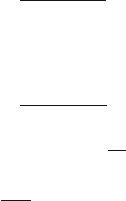
388 8Waves
8.3.9 Beat Frequency
8.81 When the man moves towards the source
f
0
=
(v + v
0
) f
s
v
When the man moves away from the source
f
0
=
(v − v
0
) f
s
v
∴ f
0
− f
0
=
v
0
v
( f
s
+ f
s
) + f
s
− f
s
=
1.5
330
(548 + 552) + 548 − 552 = 1s
∴ Beat frequency = 1/s.
8.82 Suppose the frequency of the unknown fork (unloaded) is n. Then n = 300±2
Case (i) Suppose n = 300 − 2 = 298
Let the frequency of the loaded unknown fork be n
1
and the loaded known
fork be n
2
:
300 − n
1
= 5(1)
298 − n
2
= 9(2)
Also frequency changes in both the forks are the same
∴ 300 −n
2
= 298 −n
1
or n
2
− n
1
= 2(3)
Subtracting (2) from (1)
n
2
− n
1
=−6(4)
Obviously (3) and (4) are inconsistent.
Case (ii) Suppose n = 300 +2 = 302
300 − n
1
= 5(5)
302 − n
2
= 9(6)
also 300 − n
2
= 302 −n
1
or n
1
− n
2
= 2(7)
Subtracting (5) from (6)
n
1
− n
2
= 2(8)
Thus (7) and (8) are consistent. Therefore, correct solution is n = 302.
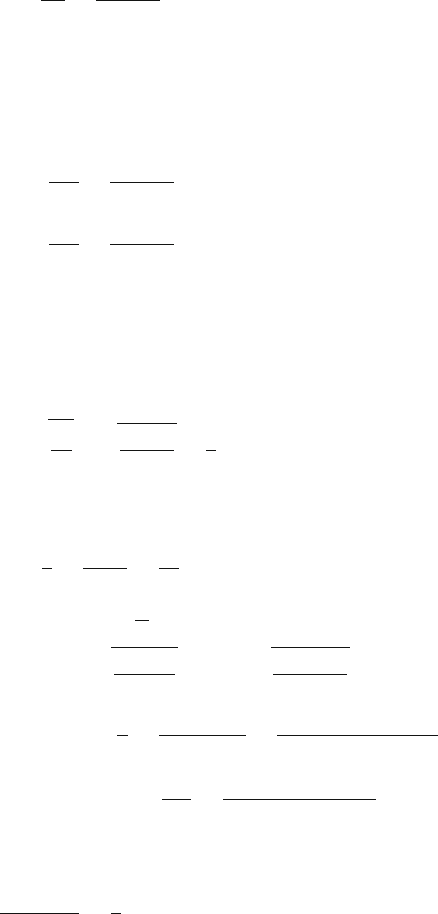
8.3 Solutions 389
8.3.10 Waves in Pipes
8.83
L =
v
2 f
=
342
2 × 439
= 0.3895 m
The new frequency with the changed length L
1
is
f
1
= 439 +2 = 441
f
2
= 439 −2 = 437
L
1
=
v
2 f
1
=
342
2 × 441
= 0.3877 m
L
2
=
v
2 f
2
=
342
2 × 437
= 0.3913 m
The pipe must be shortened by 0.3895 − 0.3877 = 0.0018 m or 1.8 mm or
lengthened by 0.3913 − 0.3895 = 0.0018 m = 1.8 mm, so that 2 beats/s may
be heard when it is sounded with the fork.
8.84 Time taken for the plate to fall is
t =
2h
g
=
2 × 10
980
=
1
7
s
Time period
T =
t
8
=
1
7 × 8
=
1
56
s
Frequency, f =
1
T
= 56 Hz
8.85
v = v
t
= v
0
t + 273
273
= 33150
20 + 273
273
= 34343 cm/s
L = (2N + 1)
λ
4
=
(2N + 1)v
4 f
1
=
(2N + 1) × 34, 343
4 × 210
(N = 0, 1, 2)... (1)
Also L = (2M +1)
v
4 f
2
=
(2M + 1) ×34343
4 × 350
(M = 0, 1, 2 ...) (2)
Equating right-hand sides of (1) and (2) and simplifying
(2N + 1)
(2M + 1)
=
3
5
(3)
The choice of N = 1 and M = 2 satisfies (3). Using N = 1in(1)orM in (2)
gives L = 122.65 cm.
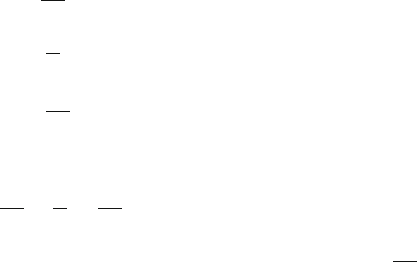
390 8Waves
Resonance with tuning forks of different frequencies is possible because
resonance for f = 210 occurs with the first overtone of the tube and for
f = 350 it occurs with the second overtone.
8.86
f =
v
2L
(open pipe, fundamental)
f
1
=
v
L
(open pipe, first overtone)
f
2
=
5v
4L
(closed pipe, second overtone)
f
2
− f
1
= 100 (by problem)
5v
4L
−
v
L
=
v
4L
= 100
∴ Fundamental frequency of open pipe, f =
v
2L
= 200 Hz.
Chapter 9
Fluid Dynamics
Abstract Chapter 9 is concerned with fluid dynamics comprising equation of
continuity, Bernoulli’s equation, Torricelli’s theorem, Reynolds number, viscosity
and terminal velocity.
9.1 Basic Concepts and Formulae
Steady flow (laminar flow): In this type of flow, the velocity of the fluid (liquid or
gas) at a point is always the same although the velocity of the fluid may be different
at different points along the line of flow.
Irrotational flow: In this type of flow the element of fluid at each point has no net
angular velocity about that point. It implies the absence of eddies and vortices.
Incompressible fluid flow: A liquid is incompressible if its density is constant.
Stream lines are imaginary curves drawn through a fluid to indicate the direction
of motion of the flow of the fluid.
Tube of flow is a bundle of stream lines which define the boundary of the fluid.
Turbulent motion and Reynold’s number: For any liquid through a pipe there
exists a critical velocity at which the laminar flow suddenly changes into turbulent
type of flow. The stability of fluid flow is described by a dimensionless quantity
called Reynold’s number (R).
R = ρvd/η (9.1)
where η and ρ are the viscosity and density of the fluid, respectively, d is the diam-
eter of the pipe and v is the velocity. If
R < 2200, the flow is steady
R = 2200, the flow is unstable
R > 2200, the flow is usually turbulent
The Equation of Continuity
The principle of conservation of mass leads to the equation of continuity. For steady
flow, the mass of fluid passing all sections in a stream of fluid per unit time is
391
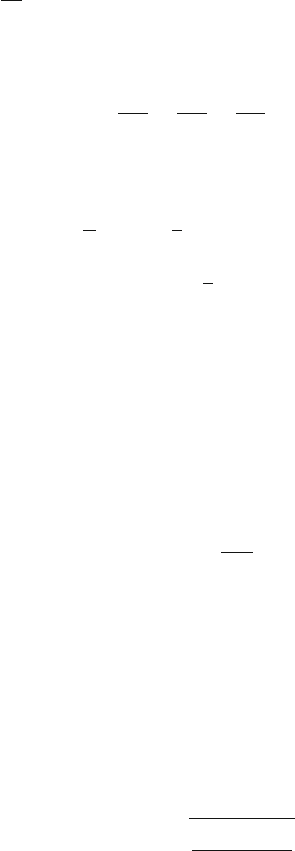
392 9 Fluid Dynamics
constant. At two points 1 and 2,
ρ
1
A
1
v
1
= ρ
2
A
2
v
2
= constant (one-dimensional flow) (9.2)
For incompressible fluids, ρ
1
= ρ
2
, and (9.2) is reduced to
Q = A
1
v
1
= A
2
v
2
= constant (9.3)
∇.ρv +
∂ρ
∂t
= 0 (equation of continuity in three dimensions) (9.4)
For steady incompressible flow, ρ = constant and (9.4) r educes to
∂v
x
∂x
+
∂v
y
∂y
+
∂v
z
∂z
= 0 (9.5)
Bernoulli’s equation for steady, non-viscous, incompressible flow
p
ρ
+ gh +
1
2
v
2
= constant (9.6)
or P + ρgh +
1
2
ρv
2
= constant (9.7)
In (9.6) the first term P/ρ is the pressure head or the potential energy per unit mass
of the liquid due to the pressure, the second term hg is the elevation head or the
potential energy per unit mass of the liquid due to gravity and the third term v
2
/2
is the kinetic energy per unit mass of the liquid. Thus, Bernoulli’s equation results
from the conservation of energy.
Torricelli’s theorem: A tank is filled with a liquid. An orifice is located at the
side of the tank, at a depth h below the surface of the liquid. Then the velocity of
emergence of the liquid from the orifice is given by
v =
2gh (9.8)
The venturi meter: It works as a gauge to measure the flow speed of a liquid. Let a
liquid of density ρ flow through a pipe of cross-sectional area A with velocity v.At
the constriction, called throat, the area is reduced to a (Fig. 9.1). A manometer con-
taining a suitable liquid of density serves to register the pressure difference between
points 1 and 2. In Bernoulli’s equation the gravitational energy term will be absent
as the centre of the cross-sectional areas A and a is at the same horizontal level.
Finally, we obtain
v = a
2(ρ
− ρ)gh
ρ(A
2
− a
2
)
(9.9)
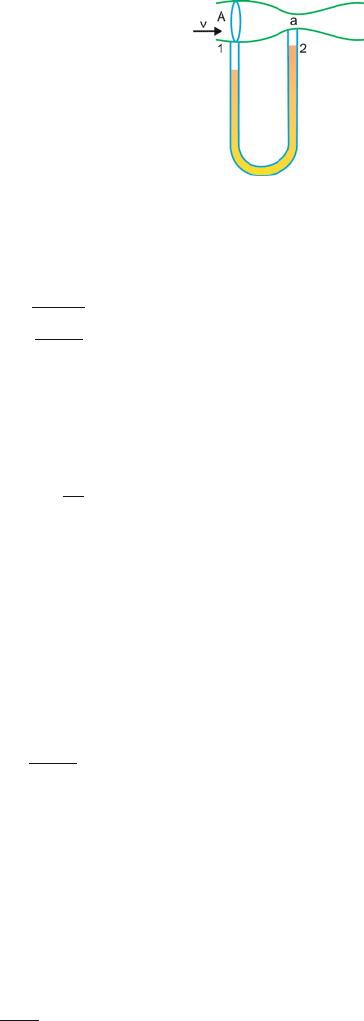
9.1 Basic Concepts and Formulae 393
Fig. 9.1
The pitot tube is a device to measure the flow speed of a gas. If ρ
is the density of
the liquid in the manometer, ρ the density of the flowing gas and h the difference in
height in the limbs of the manometer, then
v =
2ghρ
ρ
(9.10)
Viscosity: The coefficient of viscosity of a liquid is the tangential force per unit
area per unit velocity gradient. The backward tangential force acting on any liquid
layer is
F =−η A
dv
dy
(9.11)
where dv/dy is the velocity gradient which is identical with v/y for constant gra-
dient. The negative sign shows that the viscous drag acts opposite to the velocity of
the liquid.
Poiseuille’s Method for Viscosity Determination
Volume V flowing per second through a tube of radius a and length L under pressure
head P is given by
V =
π Pa
4
8ηL
(9.12)
Terminal velocity
Drag force F = 6πηrv (Stokes law) (9.13)
When a sphere of radius r and of density ρ
0
is dropped in an extensive fluid of
density ρ its speed increases linearly as for a free fall (v = gt ). However, due to
viscous drag v approaches asymptotically to a constant value v
T
given by
v
T
=
2gr
2
9η
(ρ
0
− ρ) (9.14)
394 9 Fluid Dynamics
9.2 Problems
9.2.1 Bernoulli’s Equation
9.1 The radius of a water pipe decreases from 10 to 5 cm. If the average velocity in
the wider portion is 4 m/s, find the average velocity in the narrower region.
9.2 Verify if the continuity equation for steady incompressible flow is satisfied for
the following velocity components:
v
x
= 3x
2
− xy + 2z
2
,v
y
= 2x
2
− 6xy + y
2
,v
z
=−2xy − yz +2y
2
9.3 Air streams horizontally across an aeroplane wing of area 4 m
2
, weighing
300 kg. The air speed is 70 and 55 m/s over the top surface and the bottom
surface, respectively. Find (a) the lift on the wing; (b) the net force on it.
9.4 A venturi meter has a pipe diameter of 20 cm and a throat diameter of 10 cm.
If the water pressure in the pipe is 60,000 Pa and in the throat is 45,000 Pa,
calculate the rate of flow of water in m
3
/s.
9.5 A pitot tube which is used to determine the speed of an aircraft relative to
air is mounted on the wing of a plane. The tube contains alcohol of density
810 kg/m
3
and registers a level difference of 15.0 cm. Assuming that the den-
sity of air at NTP is 1.293 kg/m
3
, find the plane’s speed in km/h relative to the
air.
9.6 A garden sprinkler has 80 small holes each 2.5mm
2
in area. If water is supplied
at the rate of 2 × 10
−3
m
3
/s, find the average velocity of the spray.
9.7 For steady, incompressible flow which of the following values of velocity com-
ponents are possible?
(a) v
x
= 3xy + y
2
,v
y
= 5xy + 2x
(b) v
x
= 3x
2
+ y
2
,v
y
=−6xy
9.8 If the speed of flow past the lower surface of the wing of an aeroplane is
100 m/s, what speed of flow over the upper surface would give a pressure dif-
ference of 1000 Pa? Assume an air density of 1.293 kg/m
3
.
9.9 A venturi meter has a pipe diameter of 4 cm and a throat diameter of 2 cm. The
velocity of water in the pipe section is 10 cm/s. Find (a) the pressure drop; (b)
the velocity in the throat.
9.10 Water is observed to flow through a capillary of diameter 1.0 mm with a speed
of 3 m/s. Viscosity of water in CGS units is
(a) 0.018 at 0
◦
C
(b) 0.008 at 30
◦
C
(c) 0.004 at 70
◦
C
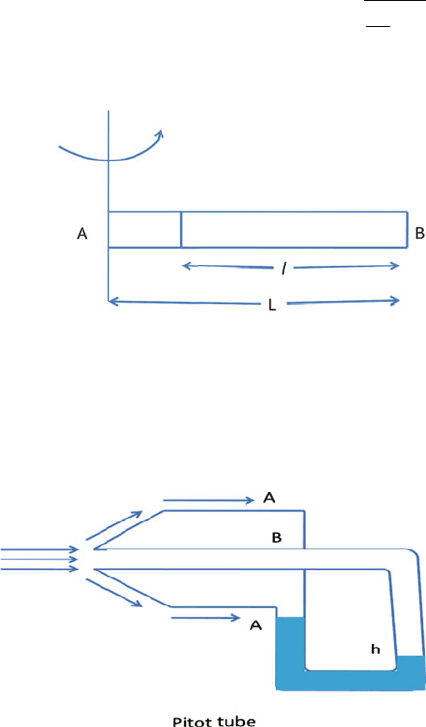
9.2 Problems 395
Calculate the Reynold’s number and test at which of these three temperatures
is the flow likely to be streamlined. Assume that for Reynold’s number R <
2200 flow is steady.
9.11 A horizontal tube AB of length L, open at A and closed at B, is filled with an
ideal fluid. The end B has a small orifice. The tube is set in rotation in the hor-
izontal plane with angular velocity ω about a vertical axis passing through A,
Fig. 9.2. Show that the efflux velocity of the fluid is given by v = ωl
2L
l
− 1
where l is the length of the fluid.
Fig. 9.2
9.12 A pitot tube, Fig. 9.3, is mounted along the axis of a gas pipeline of cross-
sectional area A. Calculate the rate of flow of the gas across the section of the
pipe if h is the difference in the liquid column and ρ
L
and ρ
g
are the densities
of the liquid and the gas, respectively.
Fig. 9.3
9.13 Water flows in a horizontal pipe of varying cross-section. Two manometer
tubes fixed on the pipe, Fig. 9.4, at sections A
1
and A
2
indicate a difference
h in the water columns. Calculate the rate of flow of water in the pipe.
9.14 A cylinder filled with water of volume V is fitted with a piston and is placed
horizontally. There is a small hole of cross-sectional area s at the other end of
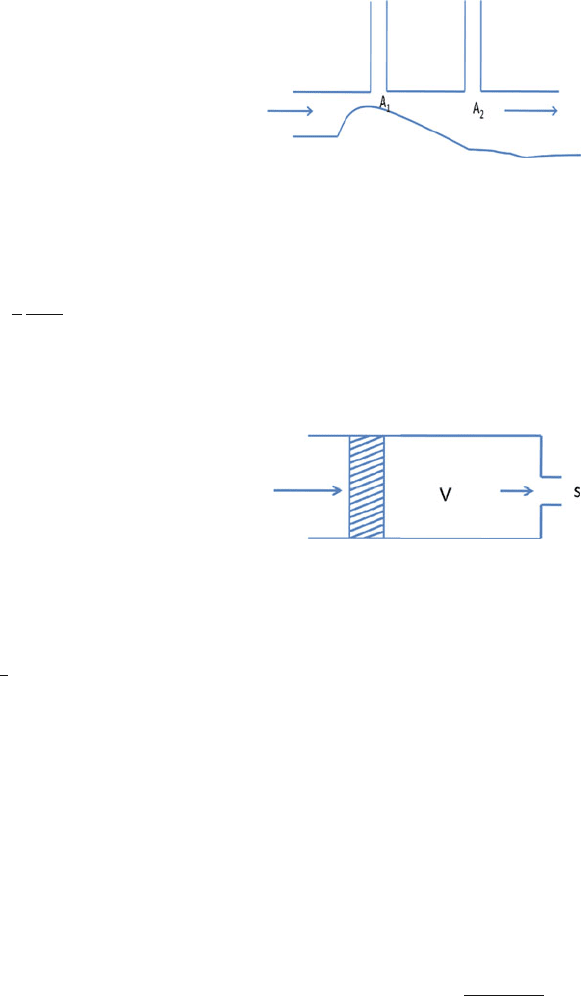
396 9 Fluid Dynamics
Fig. 9.4
the cylinder, s being much smaller than the cross-sectional area of the piston
(Fig. 9.5). Show that the work to be done by a constant force acting on the
piston to squeeze all water from the cylinder in time t is given by
W =
1
2
ρV
3
s
2
t
2
where ρ is the density of water. Neglect friction and viscosity.
Fig. 9.5
9.15 A cylindrical vessel with water is rotated about its vertical axis with a constant
angular velocity ω. Show that
(a) the water pressure distribution along its radius is given by P = P
0
+
1
2
ρω
2
r
2
, where ρ is the density of water and P
0
is the pressure at the
central point.
(b) Show that the figure of revolution of water is a paraboloid.
9.16 A manometer is fixed to a water tap. When the valve is closed the manometer
shows the reading of 3.5×10
5
Pa. When the valve is open the reading becomes
3.1 × 10
5
Pa. Find the speed of water.
9.2.2 Torricelli’s Theorem
9.17 A water container is filled up to a height H. A small hole is punched at the
side wall at a depth h below the water surface. Show (a) that the distance from
the foot of the wall at which the stream strikes the floor is 2
√
h(H −h); (b)
the second hole through which the second stream has the same range must be
punched at a depth H − h.
9.2 Problems 397
9.18 In prob. (9.17) show that the hole must be punched at a depth h = H/2for
maximum range and that this maximum distance is H.
9.19 A large tank is filled with water at the rate of 70 cm
3
/s. A hole of cross-section
0.25 cm
2
is punched at the bottom of the tank. Find the maximum height to
which the tank can be filled.
9.20 A tank of cross-sectional area A is filled with water up to a height h
1
. Water
leaks out from a small hole of area ‘a’ at the bottom. Find the time taken for
the water level to decrease from h
1
to h
2
.
9.21 A l arge tank is filled with water. The total pressure at the bottom is 3.0 atm. If
a small hole is punched at the bottom what is the velocity of efflux?
9.22 Two tanks with a large opening are filled with a liquid. A hole of cross-
sectional area A
1
is punched in tank 1 and another of cross-sectional area
A
2
in tank 2 at depths h
1
and h
2
, respectively. If A
1
= 2A
2
and the volume
flux is identical, then what should be the ratio h
1
/ h
2
?
9.23 A wide container with a small orifice in the bottom is filled with water and
kerosene. If the water column measures 60 cm and kerosene column 40 cm,
calculate the efflux velocity of water. Take the specific gravity of water as 1.0
and kerosene as 0.8 and neglect viscosity.
9.24 A wide vessel filled with water is punched with two holes on the opposite side
each with cross-sectional area of 1.0cm
2
. If the difference in height of the
holes is 51 cm, calculate the resultant force of reaction of the water flowing
out of the vessel.
9.2.3 Viscosity
9.25 Water is conveyed through a tube 8 cm in diameter and 4 km in length at the
rate of 120 l/min. Calculate the pressure required to maintain the flow. Coeffi-
cient of viscosity of water, η = 0.001 SI units. 1 atm = 1.013 ×10
5
Pa.
9.26 Two capillary tubes AB and BC are joined end to end at B. AB is 16 cm long
and of diameter 0.4 cm. BC is 4 cm long and of diameter 0.2 cm. The compos-
ite tube is held horizontally as in Poiseuille’s experiment, with A connected to
a vessel of water giving a constant head of 3 cm and C open to air. Calculate
the pressure difference between B and C.
9.27 Two raindrops fall through air with terminal velocity of v
T
cm/s. If the drops
coalesce what will be the new terminal velocity?
9.28 Q cm
3
of water flows per second through a horizontal tube of uniform bore
of radius r and of length l. Another tube of half the length but radius 2r is
connected in parallel to the same pressure head. What will be the total quantity
of water flowing per second through these two tubes?
